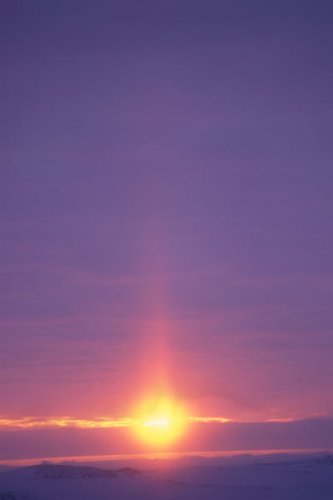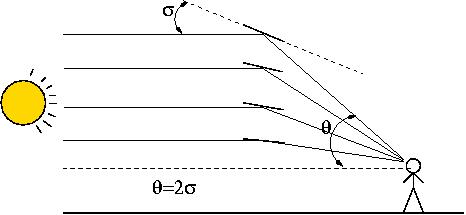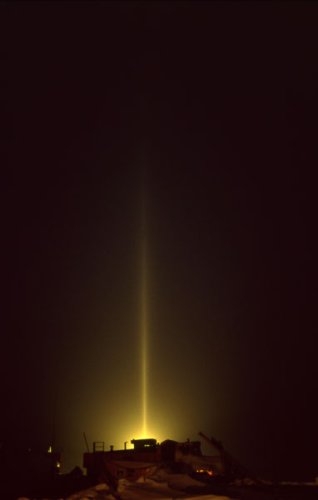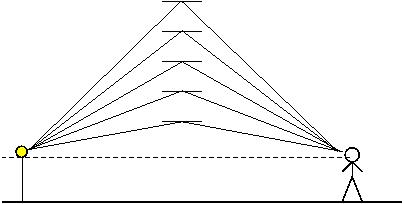Sun and Light Pillars
Light pillars are vertical pillars of light above and sometimes below the sun (or moon, Venus, or artificial lights) caused by many many reflections off the large flat face of horizontally falling plate ice crystals. The effect is very similar to glitter paths on water were many slightly tilted horizontal surface caused by ripples on water reflect a light source (usually the sun) and spread it out vertically.
Natural Light Sources
The most common light pillar is a pillar of light extending above a very low sun at sunset or sunrise. The maximum extent of the pillar is about twice the maximum perturbation of the ice crystals away from horizontal. The light is reflect off the lower surface of the plate crystal, or internally to the crystal from the inside upper surface. Because the low sun is often red or orange the resulting pillar will have the same colour.

Sun pillar at sunset.
Like many things in life, sun pillars aren't always as simple as they may seem. Sun pillars can be seen with higher sun altitudes than one would expect from simple horizontally oriented plate crystals. In this case it has been determined that the pillar is caused by highly oriented column crystals. In some cases the only way to determine the type and orientation of crystals is to compare the shape of a pillar to a computer model.

The maximum extent of the pillar is about twice the maximum tilt of the plate crystals.
Artificial Light Sources
As well as natural light sources such as the sun and moon, light pillars are often seen above artificial light sources such as street lights. A significant difference with these light pillars is that the light source is relatively near and not collimated (rays are parallel) as the light from the sun and other very distant objects is. This means that horizontally falling crystals, with very little perturbation from the atmosphere, which are half way between the observer and the light source will reflect light to the observer. The height of the pillar can be limited just by the vertical extent of the ice crystals (rather than the maximum tilt of the crystal). Also with the crystals being very evenly oriented in the horizontal plane, with little sideways extent of the pillar due to tilted crystals, a light pillar above an artificial light source can be very narrow and extend very high, sometimes almost to the apex.

Light pillar above an artificial light.

In very calm conditions an artificial light source can cause a very narrow and high light pillar from plate crystals with very little tilt.